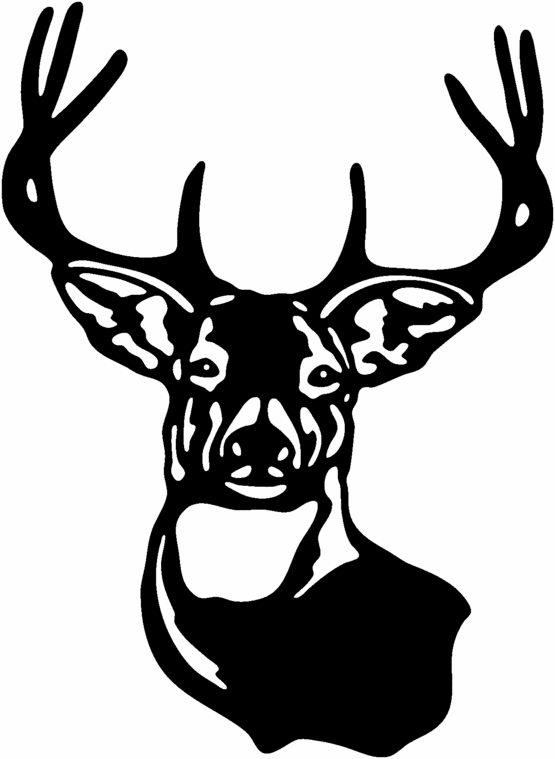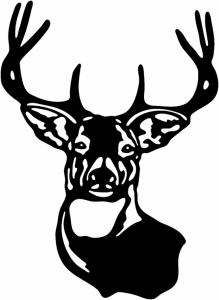
NYS 2019-20 Hunting and Trapping Licenses Now On Sale
DEC Call Center Hours Extended to Provide Assistance on Evenings and Weekends
New York State Department of Environmental Conservation (DEC) Commissioner Basil Seggos announced today that sporting licenses and Deer Management Permits (DMPs) for the 2019-20 season are now on sale.
“Each year, hundreds of thousands of New Yorkers and hunters from across the country go afield in our state because they know they will find exciting hunting and trapping opportunities in some of the most beautiful landscape around,” Commissioner Seggos said. “Whether they are searching for a prized buck, a bear, or smaller game, they can find it in New York. Buying a license helps support DEC’s many important conservation efforts and is the first step before heading out next season to safely and responsibly enjoy this great sport.”
Licenses and permits can be purchased at any one of DEC’s license-issuing agents, by telephone at 866-933-2257, or online (leaves DEC website). The new hunting and trapping licenses are valid from Sept. 1, 2019 through Aug. 31, 2020, while annual fishing licenses are valid for 365 days from date of purchase.
New York’s habitat serves a vital role in maintaining healthy and sustainable fish and wildlife resources. DEC encourages all outdoor enthusiasts to consider purchasing a Habitat & Access Stamp each year. Funds from the $5 Habitat & Access Stamp support projects to conserve habitat and improve public access for fish and wildlife-related activities. This year’s Habitat & Access Stamp features a bull moose. Last year’s Habitat & Access Stamp, which featured a Barred Owl, was the most popular stamp in DEC history, with more than 14,000 sold.
Deer Management Permits (DMPs)
DMPs are also now available at all license-issuing outlets, by phone, or online through Oct. 1, 2019. DMPs are used to manage the deer herd and are issued through an instant random selection process at the point of sale. The chances of obtaining a DMP remain the same throughout the application period-hunters need not rush to apply for one. The 2019 chances of selection for a DMPin each Wildlife Management Unit are available online, through license issuing agents, or by calling the DMP Hotline at 1-866-472-4332. Detailed information on Deer Management Permits is available on DEC’s website.
The new Hunting & Trapping Regulations Guide, which provides an easy-to-read compendium of all pertinent rules and regulations, is available on the DEC Hunting Regulations webpage. A summary of hunting and trapping regulations is currently available at license issuing agents, and copies of the full hunting and trapping regulations guide will be available at license issuing agents beginning Sept. 1.
Expanded Call Center Hours
Beginning Aug. 1, the DEC Call Center is accessible from 8:30 a.m. to 7 p.m., Monday through Friday, and from 9 a.m. to 5 p.m. on Saturdays through Oct. 1. Regular call center weekday hours (8:30 a.m. to 4:30 p.m.) will resume on Oct. 2.
Individuals should have the following items ready when buying a license:
- Complete contact information (e.g. name, address, email address, telephone number);
- DEC customer ID number (if applicable);
- Proof of residency (e.g., driver’s license or non-driver’s ID with a valid New York State address); and
- If purchasing by phone or internet, a valid credit card.
If not already entered in DEC’s automated licensing system, individuals are required to provide proof of hunter or trapper education certification or a copy of a previous license for all hunting and trapping license purchases. For additional information, visit the General Sporting License Informationwebpage on DEC’s website.
Free Hunter Education Training Courses Offered
DEC works closely with thousands of dedicated, certified instructors statewide to provide hunter education training courses free of charge. Courses are required for all first-time hunters. Courses are offered in Hunter Education, Bowhunter Education, Trapper Education, and Waterfowl Hunter Identification. Courses fill quickly, so anyone interested in taking a course should register soon. Education courses are added continuously throughout the year, so check the online system frequently to find a nearby course. To locate a nearby hunter or trapper education course, visit the Hunter Education webpage on DEC’s website or contact a local DEC office for assistance.
Opportunities for Junior Hunters & Trappers
To foster the next generation of hunters in New York, DEC has expanded opportunities for junior hunters (licensees ages 12-15) and trappers (under 12 years old) by designating special youth hunts for deer, wild turkey, pheasants, and waterfowl through the Mentored Youth Hunter and Trapper Program. These opportunities allow youth hunters and trappers to spend time in the field with experienced adults and gain the necessary knowledge and skills to become safe and responsible members of the hunting and trapping community. More information about these programs and other opportunities for junior hunters and trappers is available on DEC’s website.
Remember: Hunt Safe, Hunt Smart!
The number of hunting-relating shooting incidents is declining, but even one incident is too many. You can prevent injuries and fatalities by following the cardinal rules of hunting safety:
- Assume every gun to be loaded;
- Control the muzzle in a safe direction;
- Keep your finger off the trigger until firing;
- Be sure of your target and beyond; and
- Wear hunter orange.
Tree stand falls are a major cause of hunting injuries. These hunting-related injuries and fatalities are easily preventable. Hunters are advised to use a full-body harness and fall-arrest system and stay connected from the time you leave the ground until the time you return. Check your stand (including straps and chains) every season and replace any worn or missing parts. The proper use of tree stands and full-body harnesses will help to prevent injuries and fatalities.
Keep Chronic Wasting Disease (CWD) Out of NY
CWD is a contagious, fatal disease of cervids (deer, elk, moose, and reindeer/caribou) and is a serious threat to New York’s deer herd. New York discovered CWD in Oneida County in 2005 in captive and wild deer, but no new cases have been found in the state since that time despite intensive surveillance.
Hunters can help prevent the spread of CWD:
- Debone your harvest if you hunt outside of New York;
- Take precautions when handling deer;
- Do not feed wild deer;
- Report sick and abnormal deer to DEC; and
- Avoid natural deer-urine products.
DEC advises hunters to support efforts to keep CWD out of New York and know the regulations.
Venison Donation Program
Anyone-not just hunters and anglers-can help feed the hungry by making a monetary contribution to the Venison Donation Program at any license issuing outlet. Individuals should inform the license sales agent if interested in making a donation of $1 or more to support the program. Since 1999, the Venison Donation Coalition has used these funds to process more than 330 tons of highly nutritious venison, the equivalent of 2.8 million meals served. For more information about the Venison Donation Coalition program, visit DEC’s website.
Hunters: Want Older Bucks in New York? It’s Your Choice
Many deer hunters dream of seeing and shooting a large buck. But there is great temptation for a hunter to take the first buck they see, often a young buck, when the opportunity presents itself. New York hunters can increase the likelihood they will harvest an older, larger buck, simply by choosing to pass up shots at young, small-antlered bucks. Older bucks create more rubs and scrapes, are more challenging to hunt, and yield more meat-all things that may enhance the deer hunting experience.
Many New York hunters are already voluntarily choosing to pass on young bucks. As a result, the availability and harvest of older, larger antlered bucks is increasing.
To see and take more, older bucks, DEC encourages hunters to work with neighbors and hunting partners to cooperatively reduce harvest of young bucks, improve habitat conditions, and ensure adequate harvest of antlerless deer.

